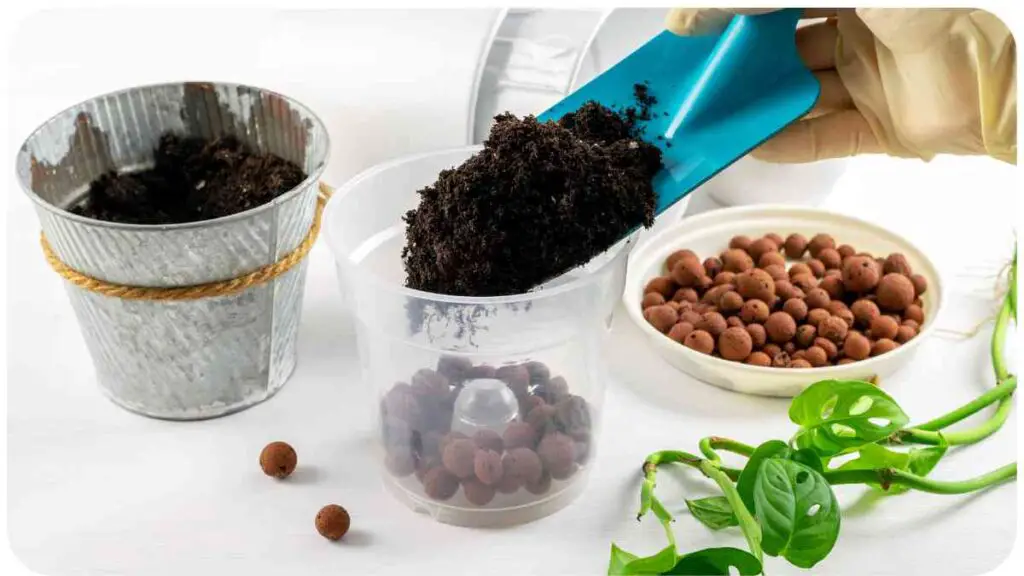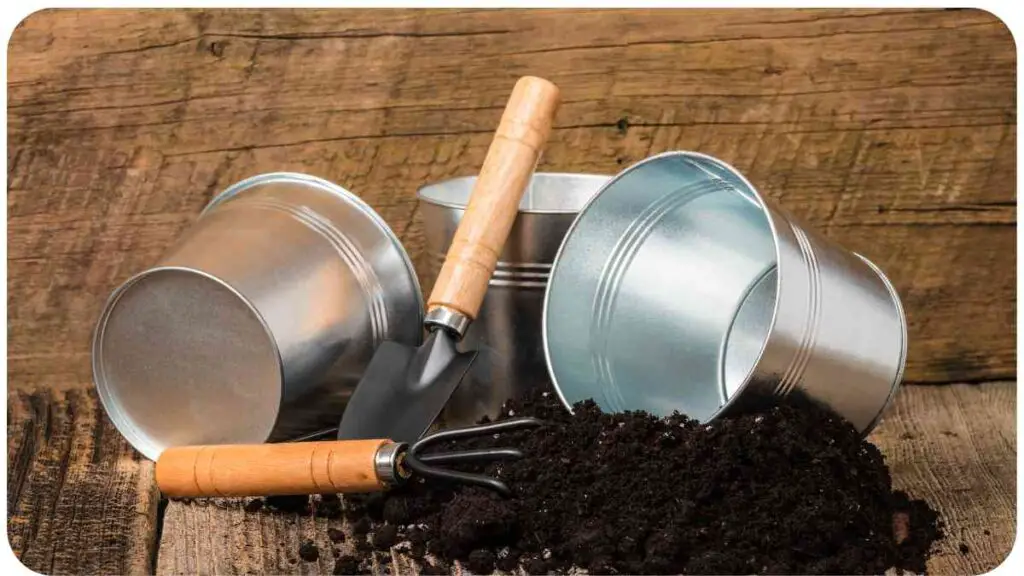When it comes to gardening, potting soil is one of the unsung heroes that can make or break your plants’ success. But have you ever wondered, what is the smallest bag of potting soil? While it may seem trivial, the size of the potting soil bag can significantly influence your gardening experience.
In this article, we’ll dive deep into the world of potting soil, exploring not just the smallest bags available but also how they fit into the bigger picture of your gardening needs.
| Takeaways |
|---|
| The smallest bags of potting soil typically range from 8 to 16 ounces, making them convenient for small gardening projects. |
| Small bags are ideal for indoor plants, seed starting, or small outdoor containers, providing just the right amount of soil without waste. |
| It’s essential to choose a potting mix that suits the specific needs of your plants, such as moisture retention or drainage. |
| Many brands offer premium potting mixes in smaller sizes, allowing you to experiment with different formulations. |
| Regularly replacing or refreshing potting soil can help maintain plant health and nutrient levels. |
| Always check for pests or diseases before reusing any leftover potting soil to ensure your plants remain healthy. |
| Reading product labels can help you find the right potting mix for your specific gardening needs, including organic options. |
| Using potting soil effectively can lead to healthier plants and a more successful gardening experience. |
What is Potting Soil?
Potting soil, often called potting mix, is specially formulated soil designed for potted plants. Unlike garden soil, which can be heavy and compact, potting soil is lighter and provides the aeration that potted plants need to thrive. It typically contains a mixture of organic materials such as peat moss, bark, and perlite, which help retain moisture while allowing for good drainage.
To create an inviting and comfortable outdoor space, it’s essential to consider how you can make use of your backyard. How to make an herb garden in your backyard can provide both a fresh culinary touch and a relaxing hobby for you and your family.
Components of Potting Soil
The composition of potting soil can vary by brand, but it generally includes:
- Peat Moss: Retains moisture and provides nutrients.
- Perlite: A volcanic glass that helps aerate the soil and improve drainage.
- Vermiculite: Helps with moisture retention and aeration.
- Compost: Adds nutrients and beneficial microbes.
- Fertilizers: Provides essential nutrients to support plant growth.
These components work together to create an ideal environment for your plants to flourish.
Why Size Matters
The Importance of Potting Soil Size

Size matters, especially when it comes to potting soil. A small bag might be all you need for your little indoor herb garden, but if you’re planting a larger outdoor garden, you might want to go big. The size of the bag affects not just how much soil you have but also how much you can do with it. It can help you save money, reduce waste, and even fit better in your gardening space.
Common Bag Sizes
Potting soil typically comes in various sizes, including:
- Small Bags: Ranging from 1 to 2 quarts (about 1 to 2 liters).
- Medium Bags: Typically 4 to 8 quarts (about 4 to 8 liters).
- Large Bags: From 10 to 30 quarts (about 10 to 30 liters).
Let’s take a closer look at the smallest bags and how they can serve you well.
When planning an enjoyable backyard experience with friends, don’t forget to explore unique ways to enhance the outdoor fun. Discover more about dog-friendly houseplants to add both beauty and safety to your space while entertaining your furry friends.
Smallest Bag of Potting Soil: An Overview
When it comes to the smallest bags of potting soil, you’ll usually find options around 1 quart. These bags are perfect for small projects or indoor plants. Whether you’re re-potting a succulent or starting a tiny herb garden on your kitchen windowsill, these smaller bags offer just enough soil without leaving you with a lot of excess.
Comparing Brands
Top Brands and Their Offerings
Not all potting soils are created equal. Different brands offer varying formulations to cater to specific plant needs. Here’s a quick look at some popular brands and their smallest bag offerings:
| Brand | Smallest Bag Size | Type of Potting Soil |
|---|---|---|
| Miracle-Gro | 1 quart | All-purpose potting mix |
| FoxFarm | 1.5 quarts | Organic potting soil |
| Espoma | 1 quart | Organic potting mix |
| Burpee | 2 quarts | Seed starting mix |
Price Comparison Table
It’s also essential to consider price when choosing your potting soil. Here’s a breakdown of average prices for small bags from various brands:
| Brand | Price (USD) | Purchase Location |
|---|---|---|
| Miracle-Gro | $3.50 | Local garden centers, Amazon |
| FoxFarm | $5.00 | Online retailers |
| Espoma | $4.50 | Home improvement stores |
| Burpee | $4.00 | Seed catalogs |
This information can help you make an informed decision about where to invest your gardening dollars.
When to Choose a Smaller Bag
Best Uses for Small Bags
Small bags of potting soil are great for specific applications. If you’re only potting a couple of plants or doing a small project, a smaller bag is just the ticket. Here are some common uses:
- Indoor Plants: Perfect for houseplants that need repotting.
- Herb Gardens: Great for starting a small kitchen garden with fresh herbs.
- Seedlings: Ideal for starting seeds in small trays or pots.
Taking care of your backyard deck ensures a long-lasting and beautiful outdoor feature. It’s useful to understand the best practices for deck restoration to maintain its charm and value, while enhancing your backyard’s overall appeal.
Cost-Effectiveness
Using a smaller bag can also be cost-effective. If you find yourself buying larger bags for just a few pots, you might be wasting soil. Smaller bags help you avoid overspending while still giving your plants the quality soil they need to thrive.
How to Use Potting Soil Efficiently

Tips for Application
Using potting soil efficiently is key to successful gardening. Here are some tips I’ve gathered over the years:
- Choose the Right Pot Size: Make sure your pot size matches the amount of soil you have.
- Mix with Compost: For even better results, mix your potting soil with compost for added nutrients.
- Water Wisely: Water your plants after repotting, allowing the soil to settle and absorb moisture.
Recycling Leftover Soil
If you find yourself with extra potting soil, don’t just toss it! You can store it for future use or even use it in your garden beds. Just make sure it’s kept dry and free from pests.
If you’re considering additional outdoor storage, think about what options will fit your backyard space. Learn how storing cars in your backyard could be a practical solution for your home without sacrificing yard space.
Where to Buy Potting Soil
Local Stores vs. Online Retailers
When it comes to buying potting soil, you have options. You can head to your local garden center or purchase online. Local stores often allow you to check the quality and see the different brands side by side. On the other hand, online shopping can offer convenience and sometimes better prices.
Best Places to Find Deals
Keep an eye out for sales at your local gardening stores, especially during spring and summer. Online platforms like Amazon also frequently offer deals on potting soil, so it’s worth comparing prices.
Lighting up your backyard can transform the ambiance for evening activities and add a personal touch. Check out these simple tips for putting up lights to create the perfect outdoor setting for your gatherings or relaxation.
Conclusion
So, now that you know what the smallest bag of potting soil is and why it matters, you’re better equipped to make informed gardening decisions. Whether you’re planting herbs or repotting houseplants, starting with the right amount of quality potting soil can set you on the path to success. Happy gardening!
Further Reading
Here are some helpful resources to expand your knowledge about potting soil and its uses:
- Small Bag of Premium Potting Mix – Plants in a Box
This product page offers a premium potting mix in a convenient small bag, perfect for potted plants and gardening projects. - Fifth Season Organic Potting Soil Mini Bag – Fifth Season Gardening
Explore this organic potting soil option that comes in a 16 oz mini bag, ideal for small gardening tasks or starting seeds. - Small Bag of Potting Mix – Bug Biting Plants
This page discusses a small bag of potting mix tailored for carnivorous plants, providing insights into its unique formulation and benefits.
FAQs
What is the purpose of potting soil?
Potting soil is specifically formulated to provide a suitable environment for potted plants. It retains moisture, offers essential nutrients, and promotes proper drainage and aeration, which are vital for plant health.
How do I choose the right potting soil for my plants?
When selecting potting soil, consider the type of plants you’re growing. Some plants, like succulents, may require a well-draining mix, while others may benefit from a moisture-retentive blend. Always read the label for specific uses.
Can I use potting soil for outdoor gardens?
While potting soil is designed for container gardening, it can be mixed with garden soil to improve drainage and nutrient content. However, it’s generally more suitable for pots than for in-ground gardens.
How often should I change my potting soil?
It’s a good idea to refresh your potting soil every 1-2 years, especially if you notice that your plants are not thriving. Replacing the soil helps to provide new nutrients and improves drainage.
Is it safe to use leftover potting soil?
Yes, leftover potting soil can be reused, but it’s essential to check for pests or diseases. Refresh it by mixing in new nutrients or compost before using it again to support your plants’ health.

For 15 years, Hellen James has worked in the gardening industry as an expert and landscape designer. During her career, she has worked for a variety of businesses that specialize in landscaping and gardening from small firms to large corporations.
